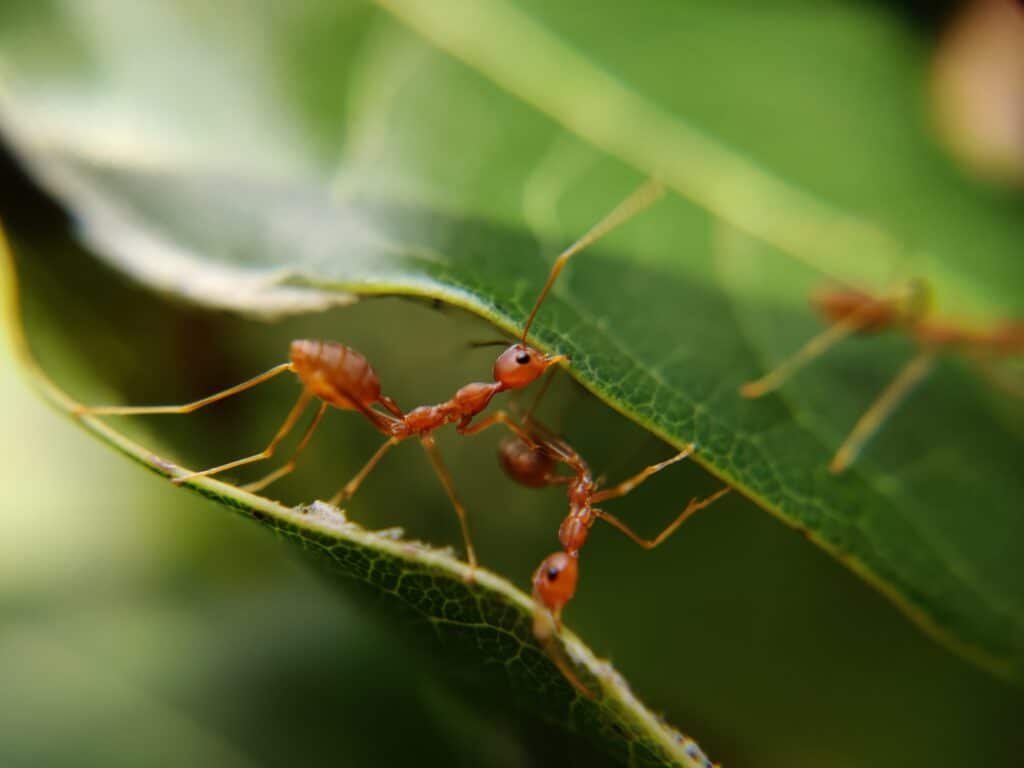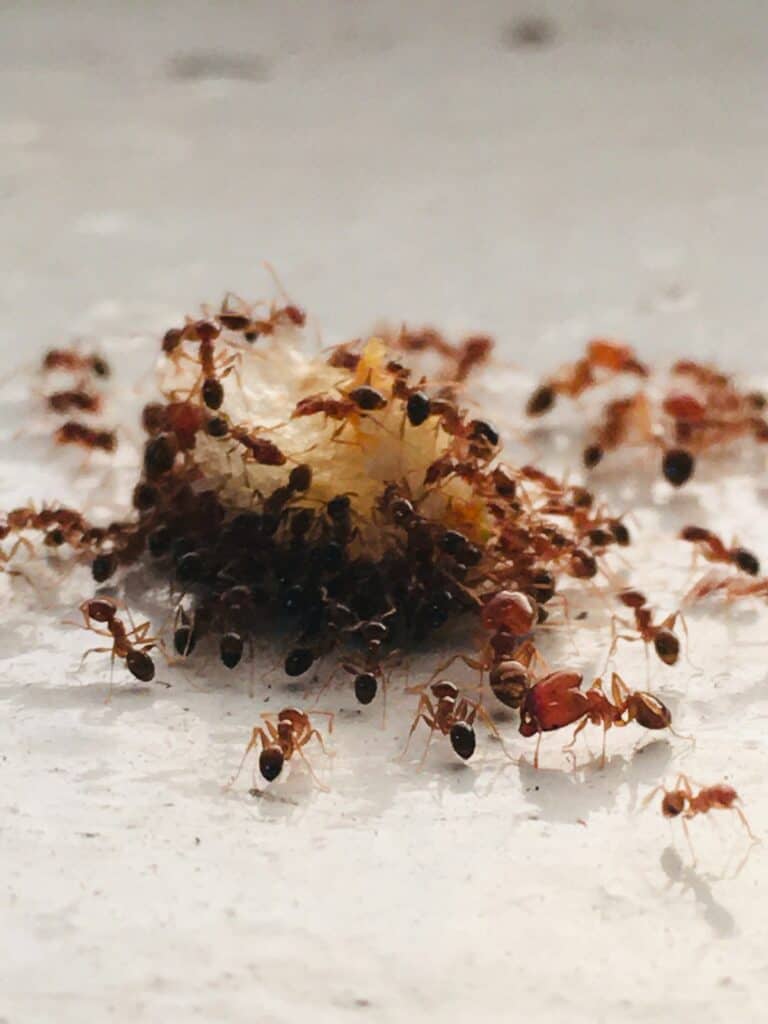Ant Solutions
Get A Quote Today!
Ants can be a nuisance for homeowners, especially when they invade your home!
Understanding the different types of ants, implementing preventive measures, and using effective pest control methods can help manage and prevent ant infestations.
Here is some information about ant control, the different types of ants, and how to prevent them:

Types of Ants
Argentine Ants
These ants are small, light to dark brown, and form large colonies. They are commonly found in kitchens and bathrooms, attracted to sweets and water sources.
Carpenter Ants
Carpenter ants are larger ants that can cause structural damage; they excavate wood to create nests. They are typically black or red in color and can be found in areas with damp or decaying wood.
Odorous House Ants
Odorous house ants are small ants that emit a foul odor when crushed. They are dark brown or black in color and are attracted to sugary substances. They can form large colonies and invade kitchens and bathrooms.
Pavement Ants
Pavement ants are small, dark brown or black ants that nest in cracks and crevices of pavement and foundations. They can invade homes in search of food.
Pharaoh Ants
Pharaoh ants are tiny, pale ants that can infest buildings in large numbers. They are attracted to sweets; greasy foods; and proteins. They can be difficult to control due to their ability to form multiple nests.
Prevention Tips for Ant Control
Cleanliness
Keep your home clean and free of food crumbs and spills. Wipe countertops; sweep floors; and regularly clean kitchen appliances. Ants are attracted to food sources – so proper sanitation is essential.
Food Storage
Store food in airtight containers, including pet food. Ants can easily access open food packages, so sealing them tightly can help deter ants.
Seal Entry Points
Seal cracks and openings in your home’s foundation, walls, and windows. Use caulk or weather stripping to close off potential entry points for ants.
Remove Attractants
Clean up pet food and water bowls after use. Keep trash cans tightly sealed and away from the house. Clean up fallen fruits and dispose of them properly.
Trim Vegetation
Trim tree branches and shrubs away from your home. Ants can use them as pathways to access your house.
Ant Trails
When you spot ant trails, clean the area with a mild detergent to remove the pheromone trails they leave behind. This disrupts their communication and makes it harder for them to navigate.

Treatment for Ant Control
Baits
Use ant baits that contain slow-acting insecticides. Ants carry the bait back to their colonies, effectively targeting the entire ant population.
Insecticidal Sprays
Use insecticidal sprays labeled for indoor ant control to kill ants on contact. Ensure proper ventilation and follow instructions carefully.
Professional Pest Control
If you have a severe or persistent ant infestation that you cannot control on your own, consider contacting a professional pest control service. They have the expertise and resources to effectively eliminate ants and prevent future infestations.
Remember, effective ant control often requires a combination of preventive measures, targeted treatments, and proper sanitation. Identifying the specific ant species can also help determine the most suitable control methods. If you are uncertain about the type of ants or the best approach for your situation, it is advisable to consult a professional pest control service for guidance.
